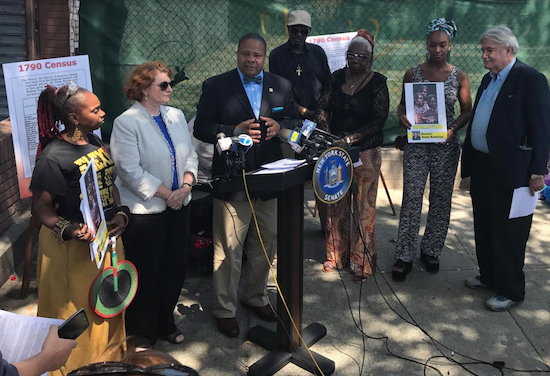After Charlottesville, pols say dig deeper into Gowanus’ possible slave graveyard

On Thursday, Sen. Jesse Hamilton and other elected officials called for an independent archaeological and architectural investigation at an empty lot in Gowanus that may be a slave burial ground. A pre-K school is planned for the site, but lawmakers are asking that its groundbreaking be delayed until proper research can be conducted. Photo courtesy of Sen. Hamilton’s office
Sen. Jesse Hamilton, Brooklyn Borough President Eric Adams and other elected officials gathered on Thursday to call for an independent archaeological and architectural investigation at an empty lot in Gowanus that may be a former slave burial ground.
Hamilton and Adams were joined by preservationists and community advocates in front of the vacant property at Ninth Street and Third Avenue to ask the New York State Office of Parks, Recreation and Historic Preservation to conduct more research to determine if the land holds the remains of 19th-century African slaves.
Given the recent violent events in Charlottesville, Virginia, officials say there has never been a more fitting time to confront America’s controversial past.
